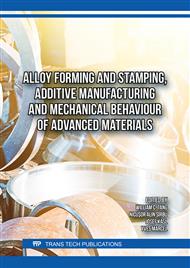p.55
p.71
p.85
p.93
p.105
p.111
p.117
p.123
p.133
Simulation Study on Thermal Protection Performance of Firefighting Clothing under the Action of Internal Air Convection
Abstract:
Firefighter protective clothing is a crucial piece of equipment for firefighters during firefighting operations. However, the current firefighting clothing, when exposed to high temperatures around 100°C, provide only about 10 minutes of protection, which is insufficient. To enhance the protective performance of firefighter clothing, the most effective approach is to incorporate a cooling source, which can then transfer its cooling energy to the suit via a circulating medium, helping to regulate the body's temperature. Water is the most commonly used circulating medium, but it significantly increases the weight of the clothing. To address the issue of balancing the weight of the cooling system and its protective effectiveness, this paper proposes using air inside the firefighting clothing as the circulating medium. This would enhance the internal heat transfer through convection. In this study, a seven-layer geometric model is constructed using finite element software. The model includes the external air layer, outer layer, waterproof and breathable layer, thermal insulation layer, comfort layer, internal air layer, and skin layer. The temperature distribution and changes on the outer surface, inner surface, and human body surface of the suit are analyzed. The material of the firefighting clothing is modeled as a porous medium, while organic silica gel is used to simulate human skin. A wet air convection heat transfer model is developed to assess its thermal protection performance. The model's reliability is verified through experimental validation. The model is then used to examine the impact of external air temperature and internal air layer thickness on the thermal protection performance of the firefighting clothing. It was found that the internal air layer significantly influenced the thermal protection: The thermal protection of the suits with air convection was significantly improved compared to the thermal protection of the suits without air convection. when the external temperature increased from 50°C to 100°C, the surface temperature of the human body rose by only 2.24°C. However, when the internal air layer thickness was reduced from 10 mm to 2 mm, the human body surface temperature increased by 4.21°C, and thermal comfort decreased, though it still did not exceed the thermal safety limit.
Info:
Periodical:
Pages:
123-132
Citation:
Online since:
November 2025
Authors:
Price:
Сopyright:
© 2025 Trans Tech Publications Ltd. All Rights Reserved
Share:
Citation:


